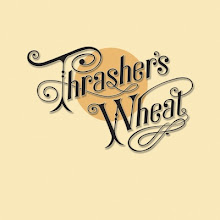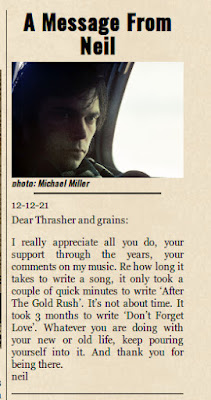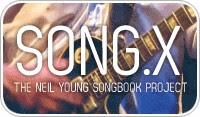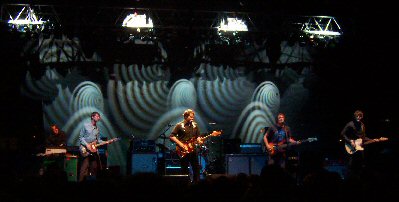Kent State Ohio Massacre Coverup Continues

70 Seconds Before Kent State Shootings
May 4, 1970 @ 12:24 PM
Kent State Truth Tribunal
So what really happened at Kent State, Ohio 42 years ago today?
Based on last week's U.S. Department of Justice (DOJ) investigation report, we still might never know. Or will we someday learn the awful truth of that tragic day that left 4 dead in Ohio?
It seems that the key to the truth lies with Terry Norman.
In recently discovered film of the Kent State Shooting in 1970 (1:07.40 thru 1:08), FBI informant provocateur Terry Norman (photo at top) is the young man in the light colored sports jacket. Earlier that day Norman's mentor, Detective Tom Kelly from the Kent Police had attempted to have Norman's gun approved for carrying on campus during the demonstrations, but that approval never came so it's KEY that the video clearly shows Norman handing over his gun to Detective Kelly.
From forensic evidence expert Stuart Allen's analyses of the Kent State Tape in 2010, we learned that Norman shot that weapon at the May 4th demonstration as he was attacked & beat-up by students who saw his gun. (More on Terry Norman ~ Does Terry Norman Hold the Key to Kent State?.)
Watching these Kent State videos without sound, Norman's gun hand-off coupled with the post-Kent State Tape analysis, we now understand the importance of this interaction caught on video & at many other sources.
Norman's pistol 'created the sound of sniper fire.'
In response to the DOJ whitewash report Congressman Dennis Kucinich issued a statement:
“The letter also failed to indicate any efforts to reconcile the evidence in the recording with any prior statements about the incident made by FBI paid informant, Terry Norman, who was on campus that day and was known to have brandished a gun that might have created the sounds caught in the recording.
“While I appreciate the response from the Justice Department, ultimately, they fail to examine key questions and discrepancies. It is well known that an FBI informant, Terry Norman, was on the campus. That FBI informant was carrying a gun. Eye witnesses testified that they saw Mr. Norman brandish that weapon. Two experts in forensic audio, who have previously testified in court regarding audio forensics, found gunshots in their analysis of the audio recording.
Did an FBI informant discharge a firearm at Kent State?
Did an FBI informant precipitate the shootings?"
Why is understanding the Kent State Ohio Massacre critical?
To understand the events of May 4, 1970 at Kent State and the four dead in Ohio, is to understand much of what has happened in our history before, during and after.
In the intervening 41 years, there have been a wide range of commissions, studies, research and theories of what actually led to twenty-eight Ohio National Guardsmen shooting into a crowd of anti-war protesters at Kent State University which left four college students dead on the ground.

Photo by Kent State photojournalism student John Filo
"History never exactly repeats itself.
But its currents are never far from the present. As today’s protesters and police employ bolder tactics, the Kent State and Jackson State anniversaries should remind us that deadly mistakes can and do happen. It is the government’s responsibility to wield proportionate force, not to over-arm police and place them in a position where they could panic with deadly results."
~~ Steven Rosenfeld, Will a Militarized Police Force Facing Occupy Wall Street Lead to Another Kent State Massacre? | Civil Liberties | AlterNet
Despite many official denials, there have always been persistent theories that the National Guard was actually provoked into the shootings by a belief that they were being fired upon themselves and therefore were acting in self defense.
What follows is a brief recap for those less familiar with the The Kent State Massacre, followed by the latest developments.
The spring of 1970 was a time of significant unrest on college campuses protesting the Vietnam war and President Richard Nixon's announcement of a new American invasion of Cambodia, provoking an escalation in anti-war protests. The anti-war protest movement culminated with the Kent State Massacre which resulted in hundreds of universities, colleges, and high schools closing throughout the United States due to a student strike of four million students. The official President's Commission on Campus Unrest concluded that "the indiscriminate firing of rifles into a crowd of students and the deaths that followed were unnecessary, unwarranted, and inexcusable."

Twenty-eight Ohio National Guardsmen fired sixty-seven rounds in thirteen seconds, leaving four students dead
Here is a summary of recent new developments from Kent State Truth Tribunal. (For more, see Kent State Truth Tribunal. Thanks Laurel for all of your work in your sister Allison's name.)

"They were about to walk out on stage and were spending a moment warming up."
Photo by Henry Diltz
Immediately after the Kent State shooting on May 4, 1970, Neil Young composed the song "Ohio" after looking at photos appearing in Life magazine and then taking a walk in the woods. Crosby, Stills, Nash, and Young went to the studio and recorded the song which was released to radio stations shortly after the killings.
A rather significant article in today's The Cleveland (Ohio) Plain Dealer "Neil Young's 'Ohio' evokes strong images of May 4, 1970 shootings at Kent State" by Mark Dawidziak:
It was more than just another protest song.
Ohio was a cry of anguish, penned by Neil Young after seeing pictures taken at Kent State University on May 4, 1970.
But 40 years after members of the Ohio National Guard opened fire on college students, Young's "Ohio" remains the most evocative pop-culture response to a defining moment in American history.
"This is an event that now is in every history book," said Carole A. Barbato, a Kent State University professor of communication studies who team-teaches a course on May 4. "Wherever you live, even though your environment obviously shapes how you perceive things, you're probably as aware of the shootings at Kent State as those of us in Northeast Ohio. And even though this still would be in the history books, the pop culture certainly does perpetuate that. "Ohio" was entering the pop-culture consciousness within three weeks of the shootings.
"It was the quickest and best reaction to Kent State, with Neil Young acting as 50 percent songwriter and 50 percent journalist," said David Bianculli, a pop-culture historian who teaches at Rowan University and regularly contributes to NPR's "Fresh Air."
"I'll tell you what that song meant," said Bianculli, author of the recently published "Dangerously Funny: The Uncensored Story of the Smothers Brothers Comedy Hour." "After the assassinations of Martin Luther King and Bobby Kennedy, you felt kind of helpless as a young person. It seemed that when someone had your voice, that voice was silenced, usually by violence.
"Then you have Kent State, and college kids are actually fired upon. And when you just might start to be thinking, you don't dare have a voice or there is no voice, from the radio comes this voice of solidarity and outrage. It wasn't just a pop song."
...
"After 1970, that doesn't happen again. It didn't need to happen again, mostly because it didn't need to happen there. And that's what Neil Young's song spoke to."
Thanks Ken D.
More on Neil Young composed song "Ohio" performed by Crosby, Stills, Nash & Young (CSNY).
Timeline of Events Leading up to May 4, 1970:
Let us continue the struggle to ensure that Allison's murder (& Bill's, Jeffry's and Sandra's) was not in vain.




The Four Dead in Ohio
Allison Krause - Age: 19, 110 YardsWilliam Schroeder - Age: 19, 130 Yards
Jeffrey Miller - Age: 20, 90 Yards
Sandra Scheuer - Age: 20, 130 Yards
A video collage of still images commemorating the 36th Anniversary of the killing of four college students by National Guardsman at Kent State in 1970
Labels: csny, kent state, neil young, ohio, song































 Human Highway
Human Highway

















 Concert Review of the Moment
Concert Review of the Moment





 This Land is My Land
This Land is My Land

 FREEDOM In A New Year
FREEDOM In A New Year









 *Thanks Neil!*
*Thanks Neil!*




![[EFC Blue Ribbon - Free Speech Online]](http://www.thrasherswheat.org/gifs/free-speech.gif)











 The Unbearable Lightness of Being Neil Young
The Unbearable Lightness of Being Neil Young Pardon My Heart
Pardon My Heart



 "We're The Ones
"We're The Ones  Thanks for Supporting Thrasher's Wheat!
Thanks for Supporting Thrasher's Wheat!




 This blog
This blog 
 (... he didn't kill himself either...)
#AaronDidntKillHimself
(... he didn't kill himself either...)
#AaronDidntKillHimself








































































 Neil Young's Moon Songs
Neil Young's Moon Songs




 Civic Duty Is Not Terrorism
Civic Duty Is Not Terrorism Orwell (and Grandpa) Was Right
Orwell (and Grandpa) Was Right


 What's So Funny About
What's So Funny About 



1 Comments:
Neil saw your concert last night
filmed in 2011.Loved those close up shots on your face. Did not realize this website existed until today.
From 1988-2002 was involved here in Maine organizing a annual conference looking at crimes committed by FBI agents.
GOOGLE FBI's Alleged Crimes are Conference Topic | News | Bates College
Currently shooting a documentary about Maine artist Robert Shetterly who has painted over 160 portraits in a series called Americans Who Tell the Truth. Each portrait has a quote from the person painted inscribed on the canvas. There is a website you can view the portraits.
Let me know if you want to do some music for the project. Contact the artist Robert Shetterly . He lives in Brooksville Maine. Joe.
Post a Comment
<< Home